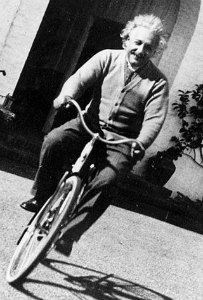
Aerobic Exercise Facilitates the Free Flow of Thought
Written by Craig Rogers, Posted on , in Section Hero Featured
There is growing evidence that aerobic exercise improves fluid intelligence.
For the past decade, I've been trying to solve the riddle of how aerobic exercise stimulates creative thinking, improves fluid intelligence, and leads to "Aha!" moments. I've used myself as a "human lab rat" in many experiments of metacognition in which I "think about my thinking" while I'm sitting still at my desk, compared to when I'm running, biking, or swimming.
Originally posted on Psychology Today by Christopher Bergland - Mar 27th, 2016 (The Athlete's Way)
I also keep my antennae up for any new empirical or anecdotal evidence that supports my hypothesis that breaking a sweat "unclamps" the prefrontal cortex and allows new ideas to bubble up into conscious awareness from subconscious regions of the brain. I have a theory that the cerebellum (link is external) (Latin for "little brain") coordinates more efficiently with the cerebrum (link is external) (Latin for "brain") when your body is in motion or you're actively problem-solving. I call this superfluidity.
Image: Albert Einstein once said of E=mc2, "I thought of it while riding my bicycle." Source: Wikimedia Commons/Public Domain
I borrowed the term superfluidity (link is external) from the world of quantum physics. As part of the creative process and peak performance, I define superfluidity as the highest state of what Mihaly Csikszentmihalyi defined as "flow (link is external)."
Based on my life experience as a triathlete, superfluidity is an episodic experience in which your mind, body, and brain function in an ego-less state of "super flow" marked by zero friction, zero viscosity, and zero entropy between thoughts, ideas, and movements.
Aerobic Exercise Facilitates the "Free Flow of Thought"
Over the weekend, I had a serendipitous and eye-opening experience that brought all of my ideas about exercise and creative thinking together in the most unexpected way . . . and reaffirmed my hypothesis about the link between exercise and fluid intelligence.
Last Friday, I woke up around 5AM and read a study (link is external) from the University of Illinois which reported that high levels of energy metabolism in motor regions of the cerebral cortex are linked to fluid intelligence, which is the ability to solve unusual and complex problems. That morning, I wrote a Psychology Today blog post about this study, "How Do Motor Regions of the Brain Drive Fluid Intelligence."
Later that day, I was checking the Psychology Today website and noticed a new "Essential Read" blog post by Peter Gray, Ph.D., "ADHD, Creativity, and the Concept of Group Intelligence." I said to myself, "That sounds right up my alley," and proceeded to read Gray's fascinating ideas about convergent "in-the-box" thinking and divergent "out-of-the-box" thinking. The subtitle of this article is: "Two brains that work differently are better than two that work the same way."
The entire time that I was reading Peter Gray's blog post—which he had posted at approximately the exact same time that I'd posted my blog post on Friday morning—I kept thinking to myself, "Yes! He's touching on so many of the same ideas that I was trying to express in my post this morning . . . I was using different language to describe very similar concepts." For example, I used the terminology "crystallized intelligence vs. fluid intelligence" while Gray used the terms "convergent thinking vs. divergent thinking."
My father was a neuroscientist. He would often describe a phenomenon, or cosmic type of zeitgeist, in medical researcher in which laboratories on different continents would often be reaching very similar conclusions simultaneously without any knowledge of the other teams' identical research. In some ways, this could be explained by the concept of "group intelligence" that Peter Gray explores in his most recent blog post.
In any event, I was so blown away by the kismet connection and timing of our two blog posts, that I sent Peter Gray a message in the public comment forum to thank him for his post and draw attention to some of the parallels in what we were both thinking.
On Saturday morning, I received a very kind and insightful message from Peter Gray that made my day. In a comment titled "The Free Flow of Thought," Peter wrote,
"Thank you, Christopher. I enjoyed your post and like your way of keeping notes on your thoughts while jogging. I go for long bike rides often, partly to get my own thoughts running freely. It is very true that, in the background, my brain is working on whatever I was thinking about and insights emerge. Best wishes to you."
To continue reading this article click "Next Page" below...
